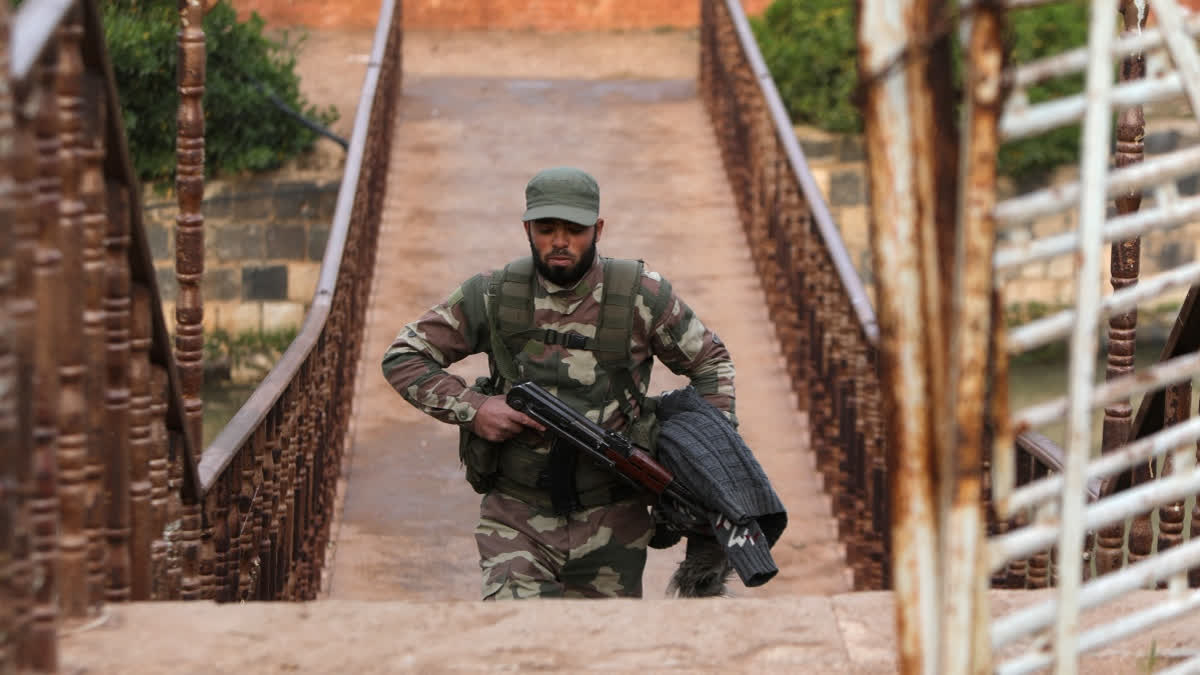Beirut:The last time Syrian President Bashar Assad was in serious trouble was 10 years ago, at the height of the country’s civil war, when his forces lost control over parts of the largest city, Aleppo, and his opponents were closing in on the capital, Damascus.
Back then, he was rescued by his chief international backer, Russia, and longtime regional ally Iran, which along with Lebanon’s powerful Hezbollah militia helped Assad's forces retake Aleppo, tipping the war firmly in his favour.
Now, as insurgents pursue a shock offensive that quickly captured not just Aleppo, but other key cities across the country's northwest and in the south, reaching the suburbs of the capital Damascus, the Syrian leader appears to be largely on his own.
Russia is preoccupied with its war in Ukraine, and Hezbollah, which at one point sent thousands of its fighters to shore up Assad’s forces, has been weakened by a yearlong conflict with Israel. Iran, meanwhile, has seen its proxies across the region degraded by Israeli airstrikes. Moreover, Syrian troops are exhausted and hollowed out by 13 years of war and economic crises, with little will left to fight.
Reports on Sunday morning said that Assad had fled the country and his government appeared to have fallen in a stunning end to the 50-year rule of the Assad family after a lightning rebel offensive.
Who are these opposition fighters?
Opposition fighters have entered Syria’s capital in a swiftly developing crisis that has taken much of the world by surprise. Syria’s army has abandoned key cities with little resistance. President Bashar Assad has now left the country. Who are these opposition fighters? If they take control of Damascus after seizing some of Syria’s largest cities, what then?
This is the first time that opposition forces have reached the outskirts of the Syrian capital since 2018, when the country’s troops recaptured the area following a yearslong siege. The approaching fighters are led by the most powerful insurgent group in Syria, Hayat Tahrir al-Sham, or HTS, along with an umbrella group of Turkish-backed Syrian militias called the Syrian National Army. Both have been entrenched in the northwest. They launched the shock offensive on Nov. 27 with gunmen capturing Aleppo, Syria’s largest city, and the central city of Hama, the fourth largest.
The HTS has its origins in al-Qaida and is considered a terrorist organization by the U.S. and the United Nations. But the group said in recent years it cut ties with al-Qaida, and experts say HTS has sought to remake itself in recent years by focusing on promoting civilian government in their territory as well as military action. HTS leader Abu Mohammed al-Golani told CNN in an exclusive interview Thursday from Syria that the aim of the offensive is to overthrow Assad’s government.
Not out of the woods
Until recently, it seemed that Syria’s president Assad was almost out of the woods. He never really won the long-running civil war, and large parts of the country were still outside his control.
But after 13 years of conflict, it appeared that the worst was over and that the world was ready to forget. Once viewed as a regional pariah, Assad saw Arab countries warming up to him again, renewing ties and reinstating Syria’s membership in the Arab League. Earlier this year, Italy also decided to reopen its embassy in Damascus after a decade of strained relations.
In the aftermath of one of the world's largest humanitarian crises, aid groups and international donors in Syria began pivoting toward spending more on the country's recovery than on emergency assistance, providing a lifeline for Syrians and restoring basic services. But then the sudden offensive launched by insurgents on Nov. 27 reignited the war and caught everyone off guard with its scope and speed.
It also left Syria’s neighbours anxious, wary that violence and refugees could spill across borders and worried about the growing influence of Islamist groups, a major concern for most of Syria’s Arab neighbours.
